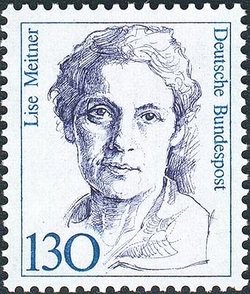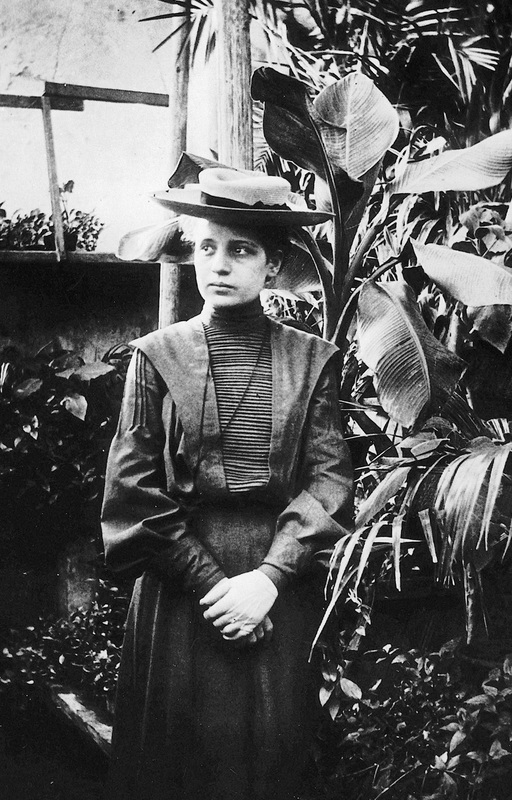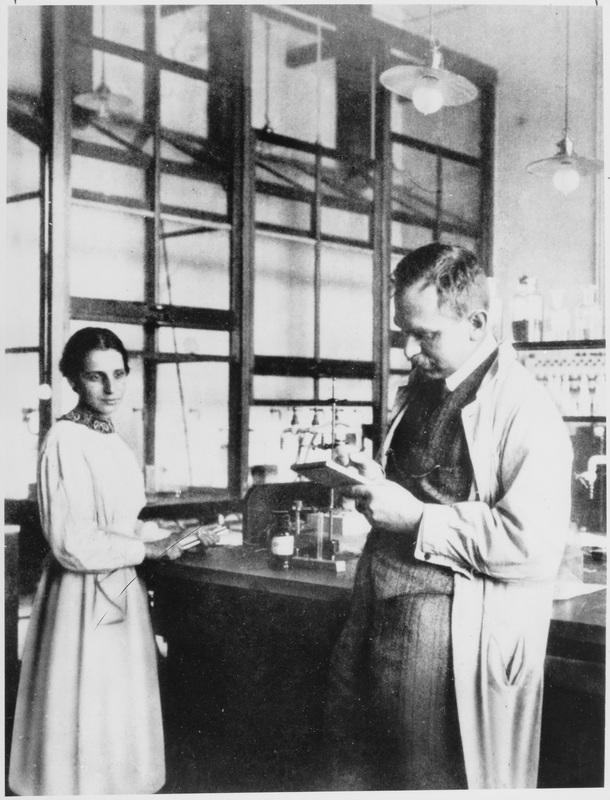|
4/8/2015 0 Comments Lise Meitner: The (Almost) Forgotten Physicist Who Helped Discover Nuclear Fission
Meitner, circa 1905 in Vienna via Wikimedia Commons
By Jessica Li
Lise Meitner collaborated with Otto Hahn in discovering nuclear fission, but Hahn’s name is the one associated most with the discovery, even nowadays, because he, not Meitner, was awarded the Nobel Prize in Chemistry for it. Meitner's role in the instrumental discovery is not recognized nearly enough, even today.

Meitner was born in 1878 in Vienna, Austria as the third of eight children. Even in her early life, she faced a number of restrictions as a woman with scholarly interests. She was, for one, only able to begin her studies at the University of Vienna at the age of 23 because of the restrictions for women in the Austrian education system.
It was, in fact, quite unusual for women at that time to pursue higher education, but Meitner fortunately had the approval and support of her parents, so she had the opportunity to study at higher levels. At the University of Vienna, she learned from Ludwig Boltzmann, who fostered her appreciation for physics and influenced her to pursue the subject during and after her time at the university. After receiving her doctorate degree from the University of Vienna, she traveled to Berlin where she learned from Max Planck and began working with Otto Hahn, with whom she collaborated closely for much of her career. Their collaboration consisted of Meitner working in the physics side of projects and Hahn working in the chemistry side. Their research also engaged other prominent scientists of the time, including Fritz Strassmann, in determining whether or not the radioactive isotopes they produced through neutron bombardment were transuranic elements. When Germany annexed Austria in 1938, Meitner, who was from a Jewish family, had to flee. She went to Manne Siegbahn's institute in Stockholm where she had access to lab space and equipment, but unfortunately not to other researchers able to or interested in collaborating with her. She communicated with Hahn and Strassmann, mostly remotely, to continue their work in identifying those radioactive isotopes they had created. She even met with Hahn secretly in late 1938 and suggested that he and Strassmann conduct additional tests on the uranium product that they believed to be radium. Their further research showed that it was actually barium, not radium as they had thought, and their results were published in Naturwissenschaften in early 1939, around the same time that Meitner and her nephew, Otto Frisch, explained nuclear fission and were published in Nature for it. Both Meitner’s and Frisch’s contributions in the physics areas and Hahn’s and Strassmann’s contributions in the chemistry areas were essential to the discovery and proof of nuclear fission, but only one side was recognized by the Nobel committee.
Meitner with Otto Hahn in the lab, before her exile
Hahn's rationalization of the marginalization of Meitner’s work, through giving reasons like her separation from those she collaborated with during her time of forced exile, only made it even more difficult for Meitner to receive the recognition she deserved.
The Nobel committee’s “mistake” was only partially compensated for when Meitner received the Enrico Fermi Award along with Hahn and Strassmann in 1966. Frisch once wrote that “Boltzmann gave her the vision of physics as a battle for ultimate truth, a vision she never lost.” In spite of the challenges she faced, especially as a woman in science in the 20th century, her love for the study of physics always stayed with her, and, as a result, she made amazing, lasting contributions. Her story is then like a quest for the credit due to an outstanding, influential woman who was essentially robbed of the honor she rightfully deserved. In many ways, Meitner’s own story, as it actually was and as it is remembered through the years, is also one of a battle for ultimate truth. Sources:
Comments? Leave them below!
0 Comments
Leave a Reply. |
SPOTLIGHTSMeet our Scientista Spotlights -- current-day women in STEM and women from science history -- and find your role model! Read opinion editorials and history pieces to get additional inspiration.
WHAT'S NEWYOU MIGHT ALSO LIKE
WHAT'S HOTCONNECT WITH USARCHIVES
June 2018
|
The Scientista Foundation, Inc. All Rights Reserved © 2011-2021 | Based in NY | [email protected]
The Network for Pre-Professional Women in Science and Engineering
The Scientista Foundation is a registered 501(c)(3) -- Donate!
The Network for Pre-Professional Women in Science and Engineering
The Scientista Foundation is a registered 501(c)(3) -- Donate!











 RSS Feed
RSS Feed